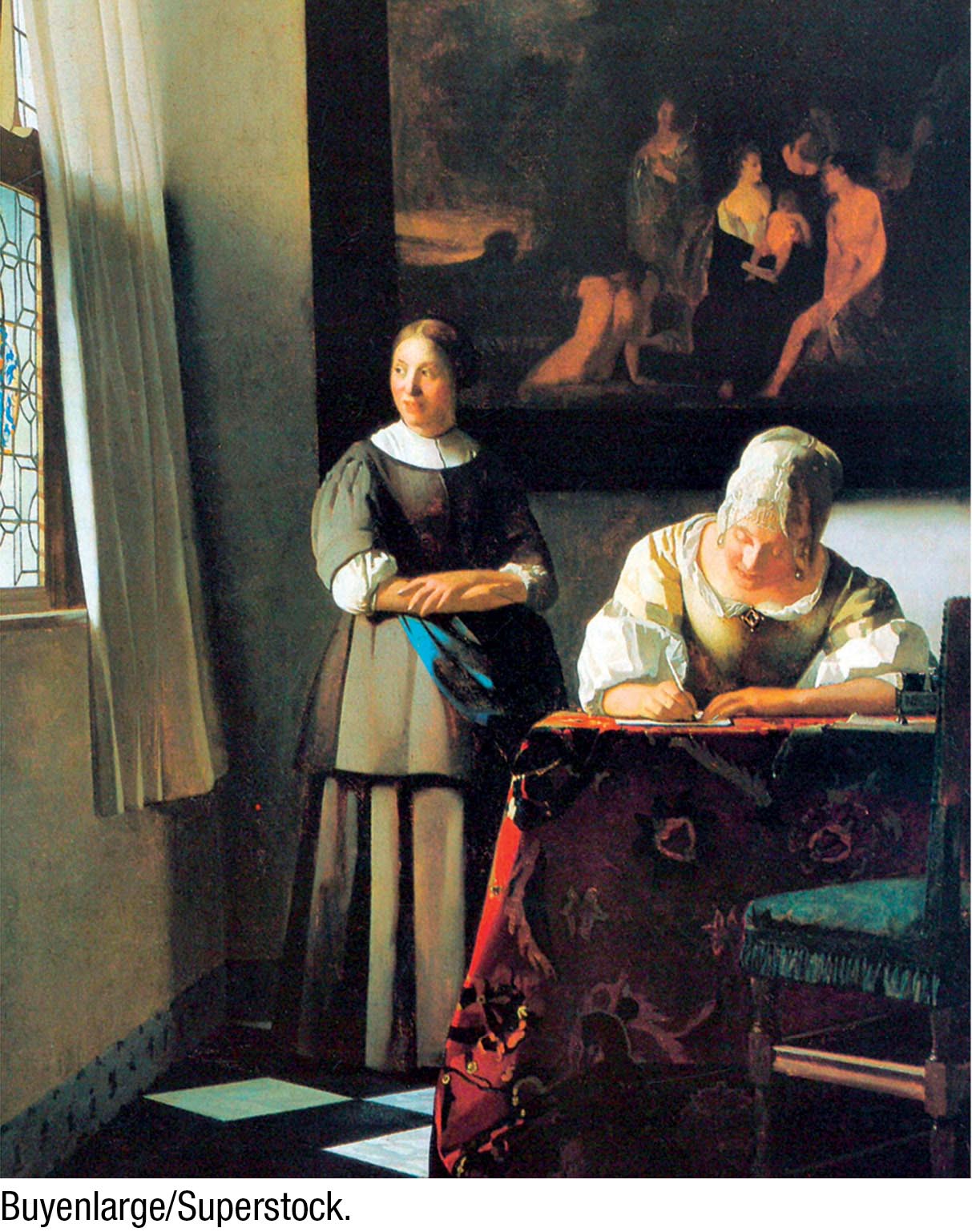Chapter 8: Introduction
Lighting Skills
8
CHAPTER
“No film or digital technology can ‘see’ the way the eye sees, so cinematographers must know how to light to create that impression.”
– Vilmos Zsigmond, Academy Award–winning cinematographer of Close Encounters of the Third Kind (1977), The Black Dahlia (2006), The River (1984), and 80 others

Johannes Vermeer, Lady Writing a Letter to Her Maid (1670)
KEY CONCEPTS
 Lighting, one of the primary arts of filmmaking, allows you to achieve the illusion of three dimensions by adjusting the texture of what’s in the frame through the position of your lights and accurate measurement of luminosity.
Lighting, one of the primary arts of filmmaking, allows you to achieve the illusion of three dimensions by adjusting the texture of what’s in the frame through the position of your lights and accurate measurement of luminosity. Lighting is only seen when it is properly exposed, which involves creative and technical decisions.
Lighting is only seen when it is properly exposed, which involves creative and technical decisions. Color is the way we see the visible spectrum of light, and you can control the look of your movie by selecting the correct color temperature and checking the white balance of every scene.
Color is the way we see the visible spectrum of light, and you can control the look of your movie by selecting the correct color temperature and checking the white balance of every scene. There are many tools you can use to create and control lighting. Although some are complicated, others are as simple as sunlight.
There are many tools you can use to create and control lighting. Although some are complicated, others are as simple as sunlight.
Can a cinematographer paint with light the way an artist creates light with oil paints? Dutch artist Johannes Vermeer was known as a master of light. He came to his mastery slowly and honestly over the course of his career, repeatedly painting the same room. He experimented with how light looks in the morning and in the afternoon; he learned to focus light by pulling back a drape and to diffuse light with a sheer curtain.
Although Vermeer left only 37 paintings, art historians speak with certainty about his intention and technique: so studied and so practical. His repetition of visual elements—a room, a window, a curtain—demonstrate the careful planning and focus on details that went into each painting.
Many respected cinematographers have studied Vermeer, along with other great classical artists. Cinematographers today rightly see themselves as followers in the grand tradition of painting with light, a tradition that reaches back centuries. And cinematographers use many of the same lighting techniques that classical artists used: the sun as a primary source of illumination, fabric to focus or soften the light, and other approaches—some of which you will learn in the next two chapters.
We asked master cinematographer Russell Carpenter, who won an Academy Award for his work on Titanic (1997), to reflect on the use of light in Vermeer’s 1670 painting Lady Writing a Letter with Her Maid. Russell studied the painting carefully.
“Ah, Vermeer,” he began.
Along with Caravaggio and Rembrandt, Vermeer has influenced more cinematographers than can be told. He’s one of the very first forefathers of modern cinematography. This work of art looks so beautiful, real, and well composed, and yet I think it’s full of lies, as is the work of any good cinematographer. Even though it looks like both figures are lit by the same light, they aren’t—because light doesn’t work that way. There’s so much to learn from Vermeer!
(To see Russell Carpenter compose a plan for how he would light the scene in this painting, go here.)
In your class projects, you will experiment with lighting as you seek to put on-screen a vision of light that has begun in your mind’s eye. First, you’ll discover how light finds itself in contrast and shadow, and how you can measure light. Next, you’ll learn how to capture the way light actually looks with proper exposure. Finally, you’ll explore color, color temperature, and how to make light appear white in your movie. With these principles in mind, you will start using lighting gear to illuminate outdoor and indoor shoots, and then be able to apply your skills to telling a story using light in the chapter that follows.